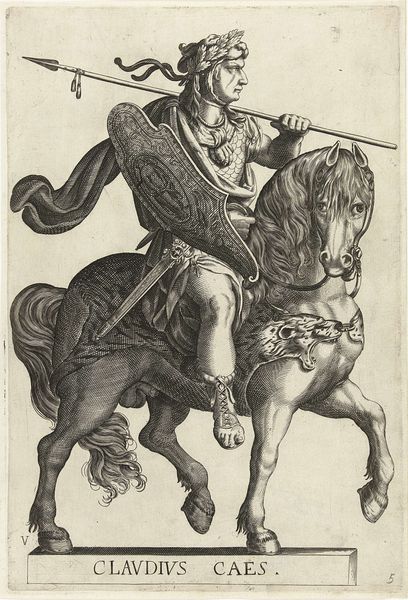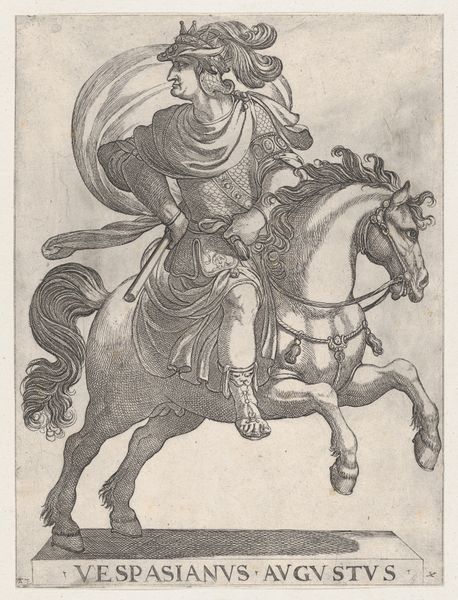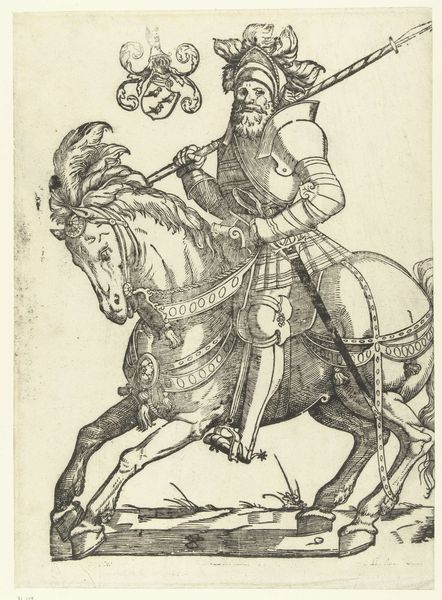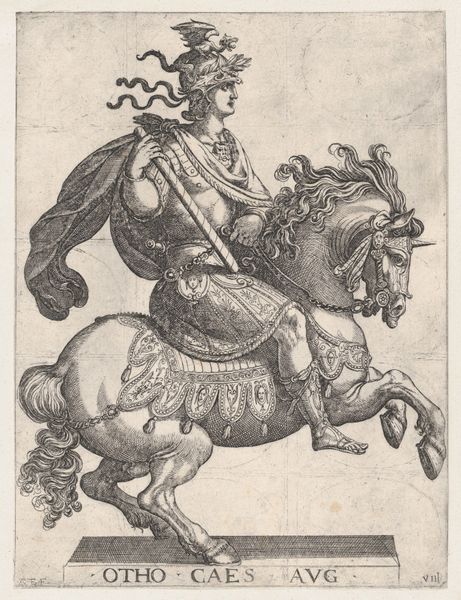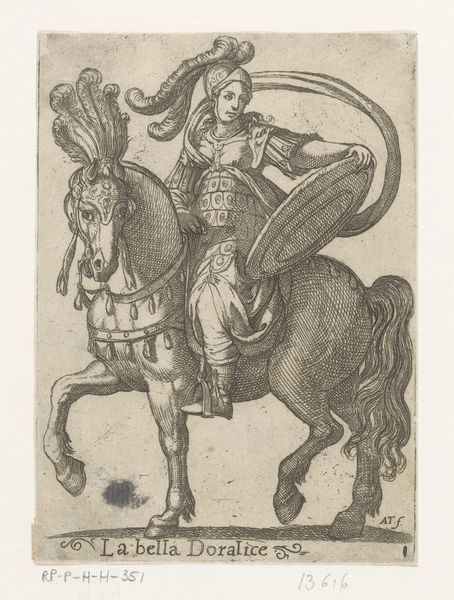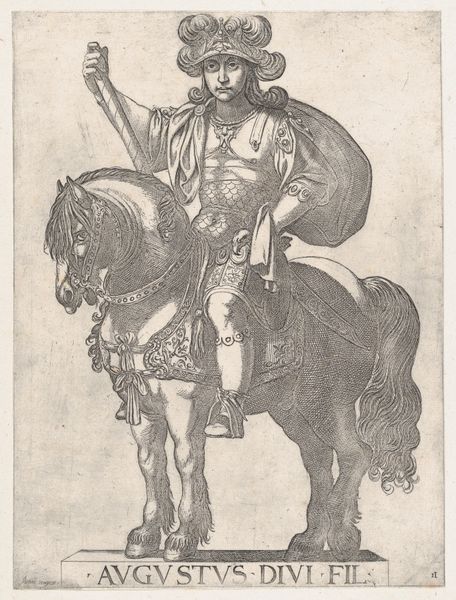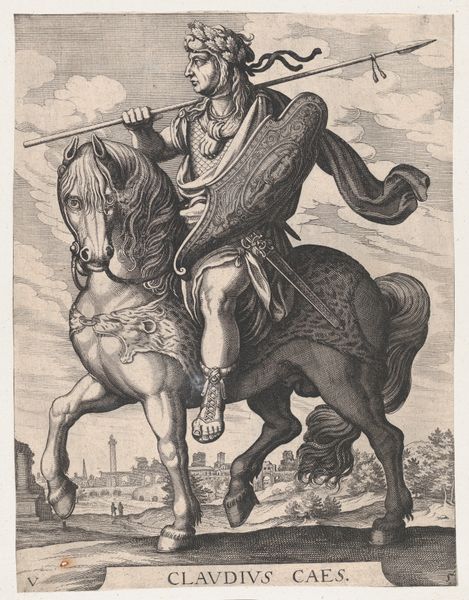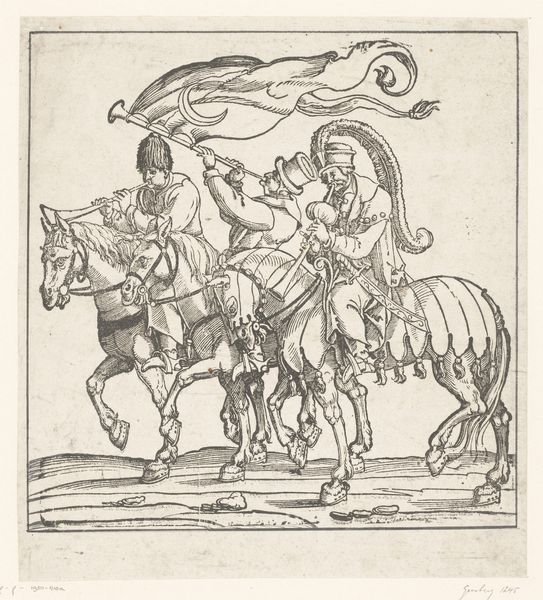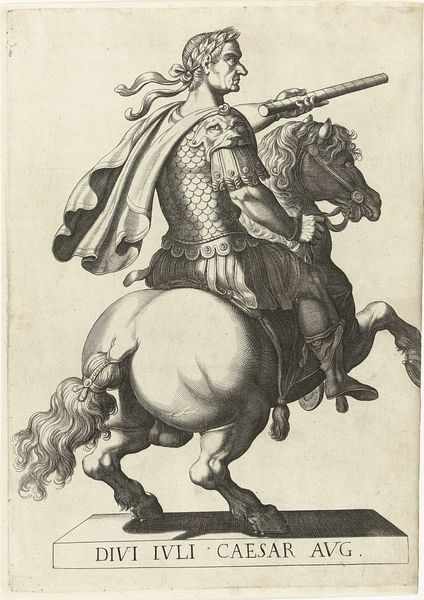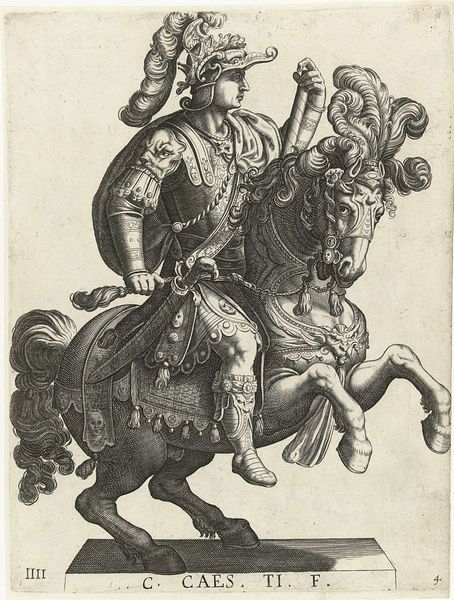
Plate 5: Emperor Claudius on Horseback, from 'The First Twelve Roman Caesars' 1596
0:00
0:00
drawing, print, engraving
#
portrait
#
drawing
# print
#
figuration
#
ancient-mediterranean
#
history-painting
#
academic-art
#
engraving
Dimensions: Sheet: 11 13/16 × 8 3/4 in. (30 × 22.3 cm)
Copyright: Public Domain
Editor: Here we have Antonio Tempesta's engraving from 1596, "Plate 5: Emperor Claudius on Horseback, from 'The First Twelve Roman Caesars'". There is a palpable sense of strength conveyed through the figure's imposing stance, amplified by the rearing horse. What historical context helps us understand this work's enduring appeal? Curator: This print series exemplifies the enduring fascination with Roman emperors in the Renaissance. It wasn’t just a celebration of the past; it was about using history to legitimize present power. Consider how imagery of powerful rulers throughout history reinforces contemporary rulers’ claims. Do you see anything particular in the print itself which tells you how Tempesta might be positioning Claudius? Editor: Well, the level of detail certainly romanticizes him. Look at the muscular horse adorned with ornate coverings, or Claudius clad in armour and a laurel wreath. It all appears pretty flattering. Curator: Exactly. These weren't objective portraits; they were strategic portrayals designed to shape perception. Printmaking allowed these idealized images of leadership to circulate widely, influencing political discourse and reinforcing social hierarchies of the period. Do you think seeing an idealized Roman emperor would shape expectations of contemporary European rulers? Editor: Definitely. It establishes a powerful visual link between current leadership and a glorious past. It makes you wonder how the artist felt about it and the powerful impact it would have had on the masses at the time. Curator: Precisely. Consider also the power dynamics at play when artworks romanticize past empires during the rise of European colonialism. By studying art, we begin to analyze how socio-political factors and art are intertwined. Editor: This engraving is an amazing intersection of art, history and political influence. I'll definitely look at portraiture differently from now on!
Comments
No comments
Be the first to comment and join the conversation on the ultimate creative platform.
